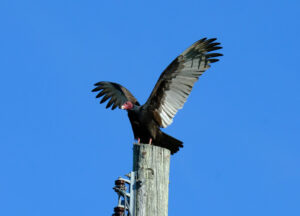When biologist Carley Schacter first started banding California gulls for the San Francisco Bay Bird Observatory (SFBBO) in the South Bay salt ponds and landfills, she used Doritos as bait. Not a great idea. At the approach of a perceived threat–such as a research biologist–a gull’s first defense is to vomit. Thus, neon orange vomit. Now Schacter uses plain tortilla chips.
In addition to banding 500 adult gulls over the last two years, Schacter and volunteers also count gulls in colonies. The most dramatic count, says Schacter, is at the gull’s largest local breeding colony, the A6 salt pond near Alviso, where researchers have counted more than 25,000 gulls. This “pond” has been out of salt production for over 20 years, so it’s now more of a mudflat. A small group of scientists and volunteers–wearing rain jackets and bicycle helmets–systematically walk the area to count every nest, bird, and egg. “There are a variety of gulls’ nests,” she says. “They range from a sad, scraped-out depression to a six-inch-tall nest made of twigs.” Once they found a nest made entirely of chicken bones, and in another, a tennis ball snuggled in with the eggs. Gulls are opportunistic eaters and have found their slice of heaven at the area’s landfills. The colony floor is littered with chicken bones, old pizza, and bagels.
“The California gull population is exploding here,” Schacter says. Before the 1980s, gulls didn’t even breed in South Bay salt ponds. They spent winters on the coast and departed mid-March for breeding colonies east of the Sierra Nevada, such as at Mono Lake. In 1980, a few dozen nests were discovered in the South Bay. Now, less than 30 years later, there are more than 46,800 breeding adults at six or seven different colonies (and that’s not counting immature birds). Before the gull numbers exploded, the salt flats had a mixed population of terns and smaller shorebirds, says Schacter, but “the gulls force out smaller birds that can’t compete.”
The goal of SFBBO’s work is to predict where the gulls will go after levees are breached in 2010 as part of the South Bay Salt Pond Restoration Project. If researchers can figure out where the birds might go, says Schacter, they can alert managers of other sites nearby to give them time to prepare mitigation measures.
You can help. If you spot a gull this summer with a black, field-readable band with three white numbers on its left leg, contact Schacter at cschacter@sfbbo.org or (408)946-6548, ext. 15. Report the date, location, number on the band (if you can read it), and anything else about the bird’s behavior, and Schacter will add it to her data set.

.jpg)



